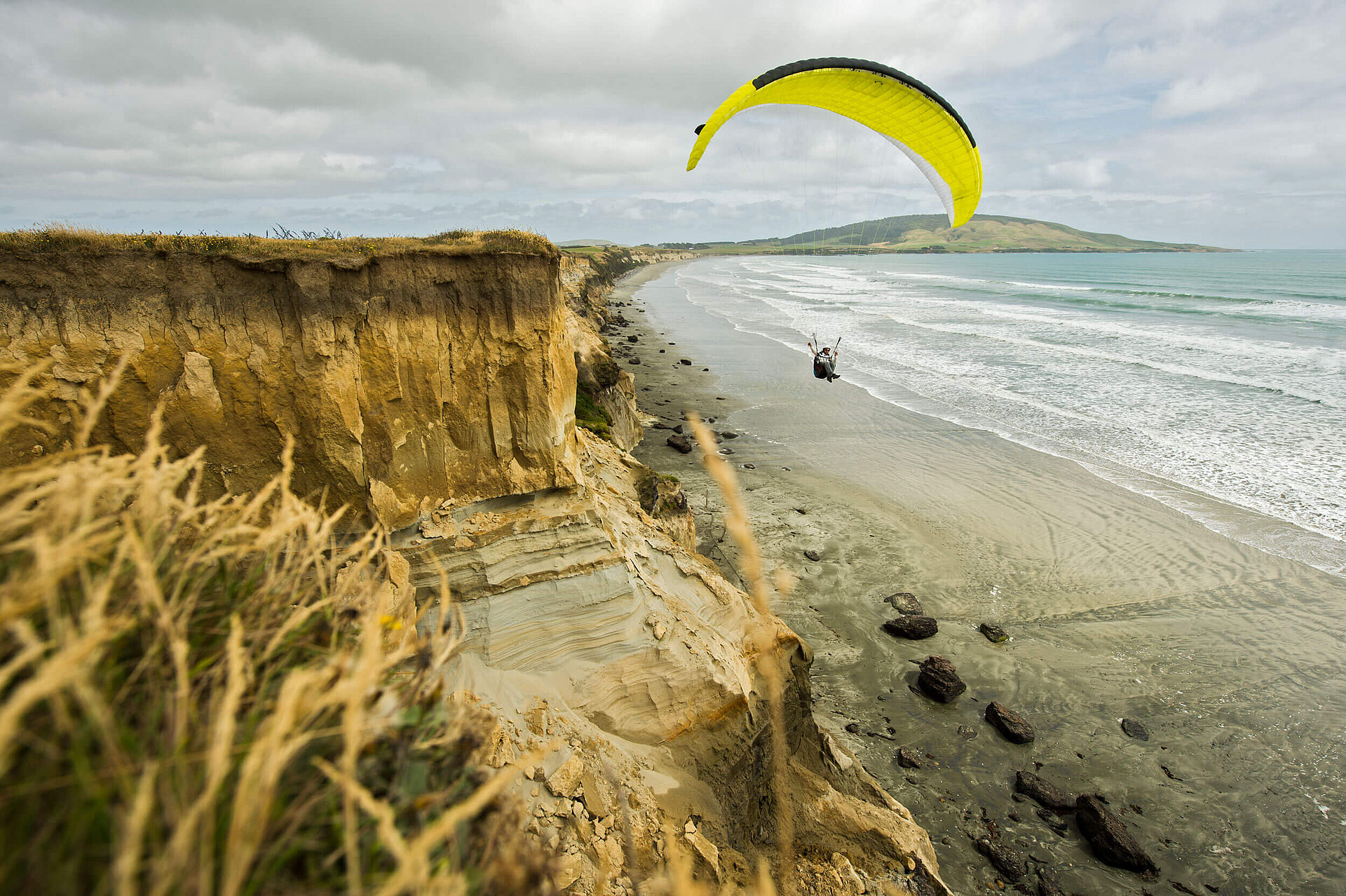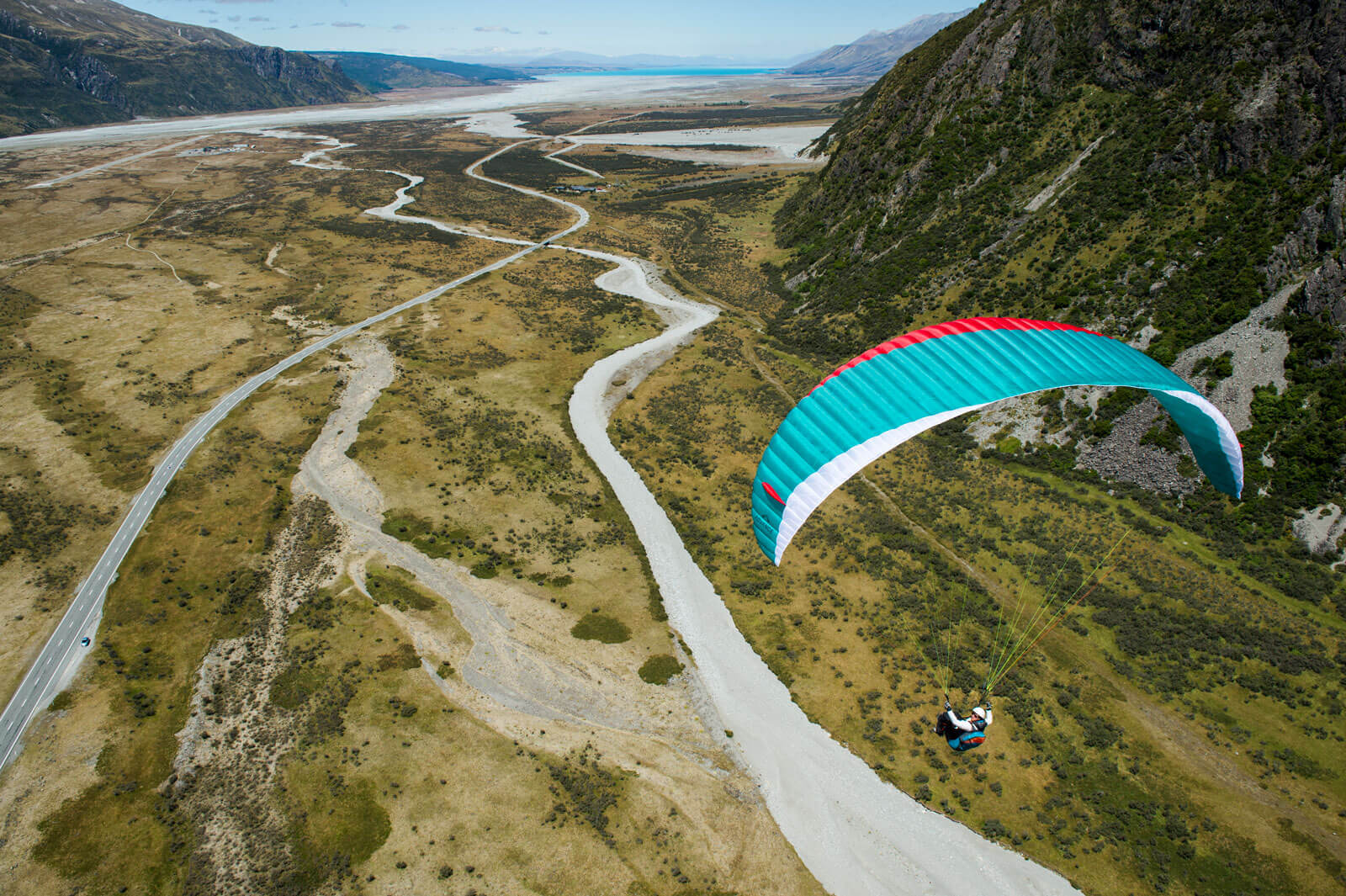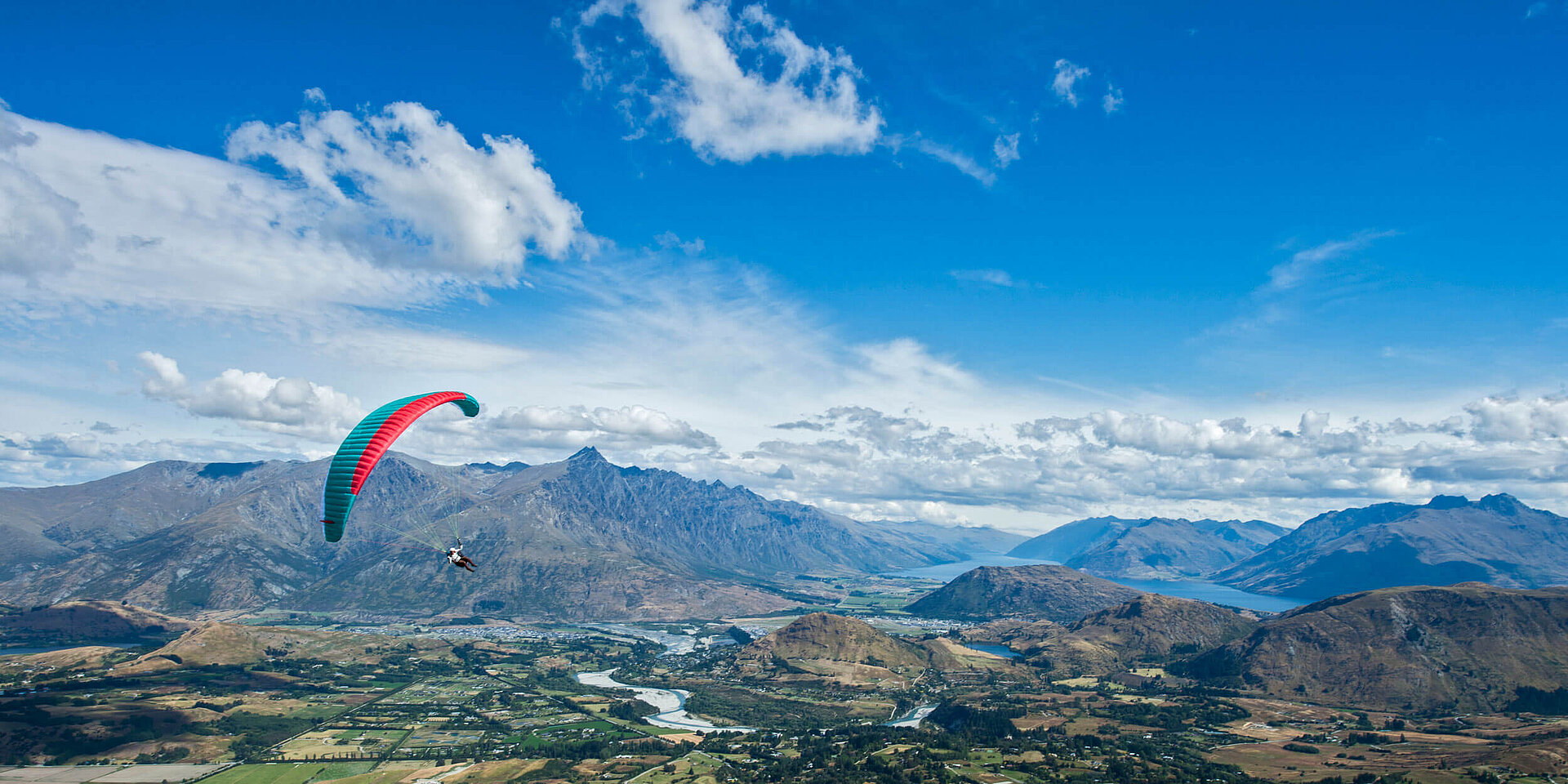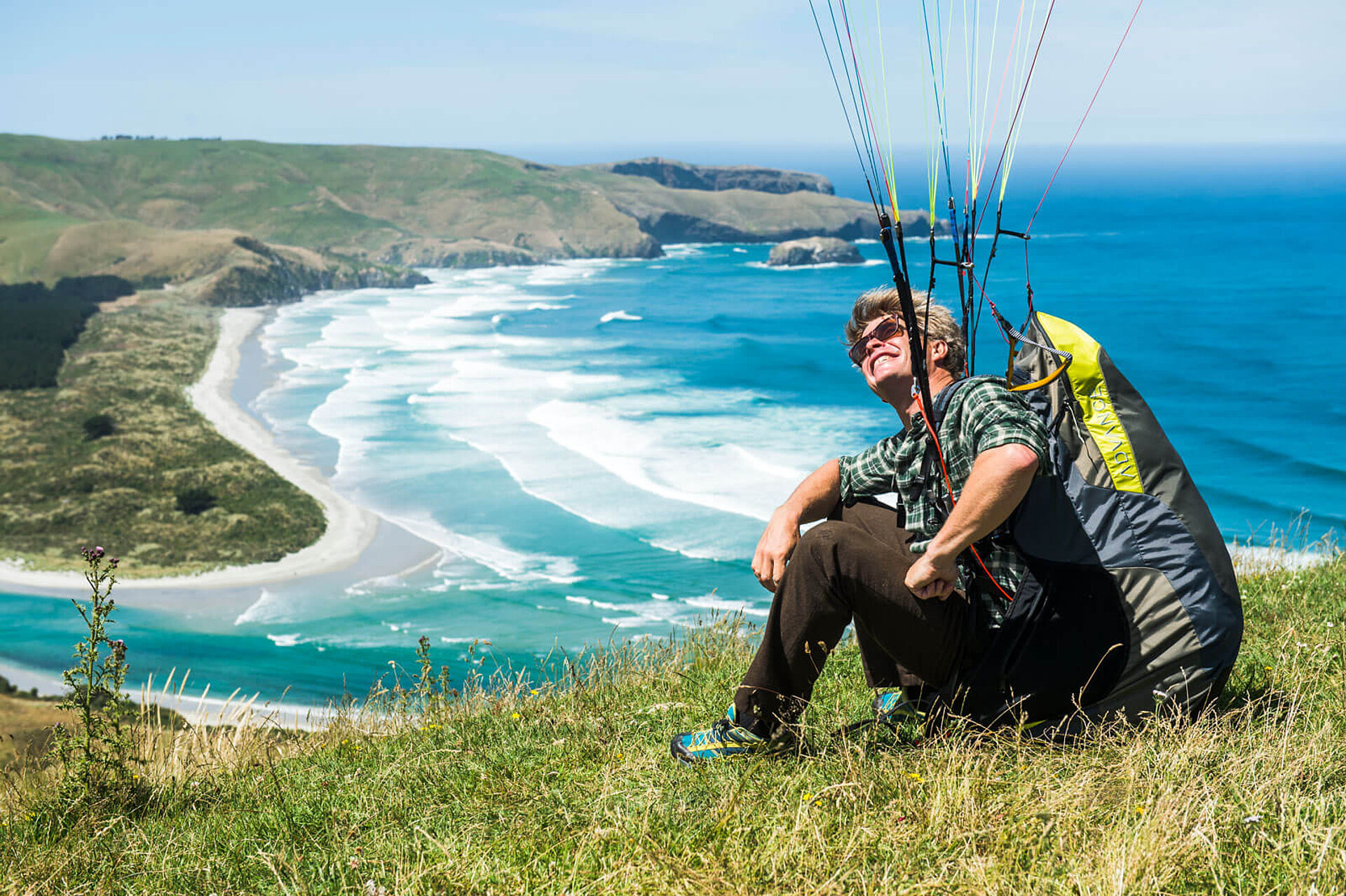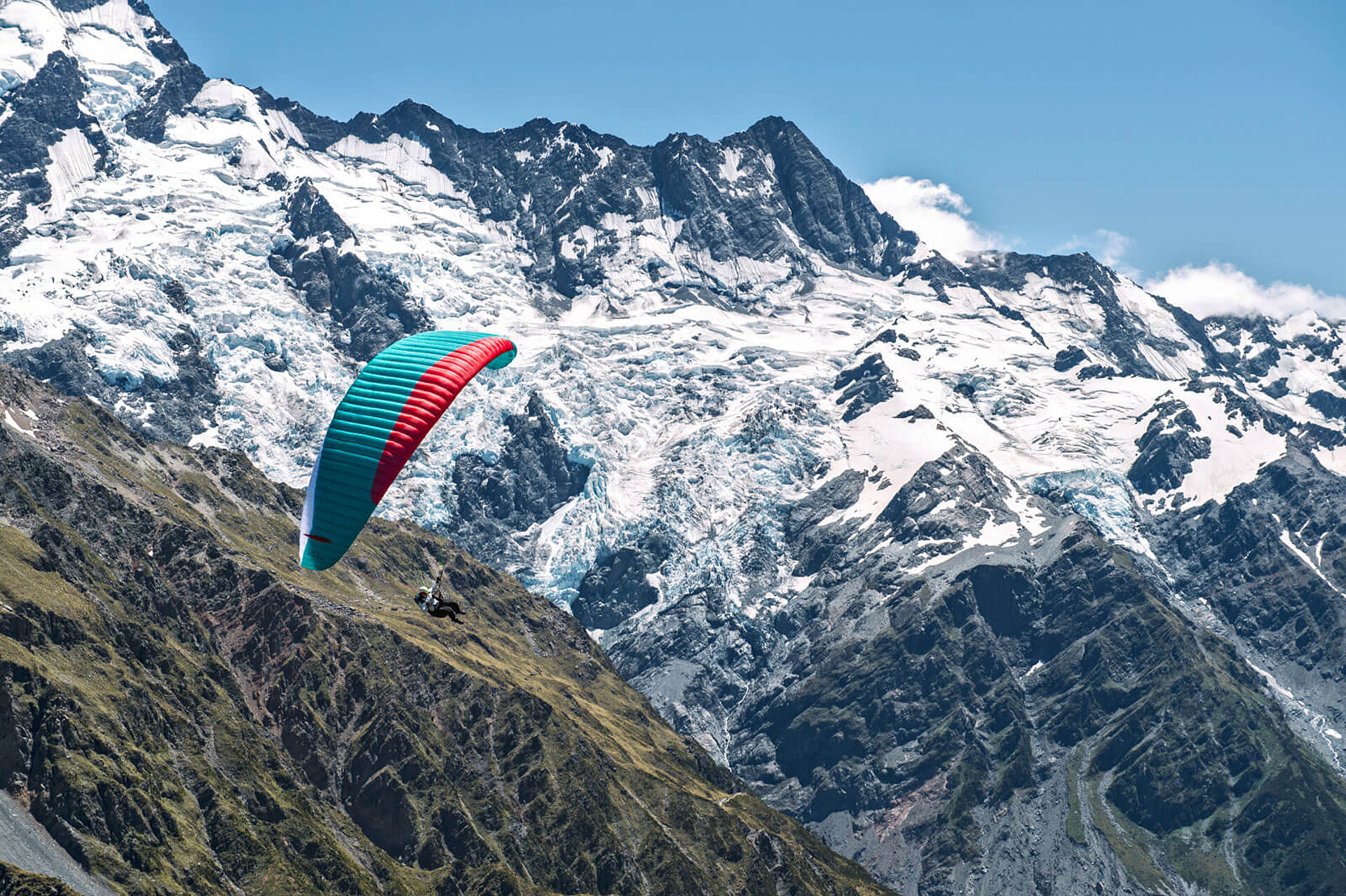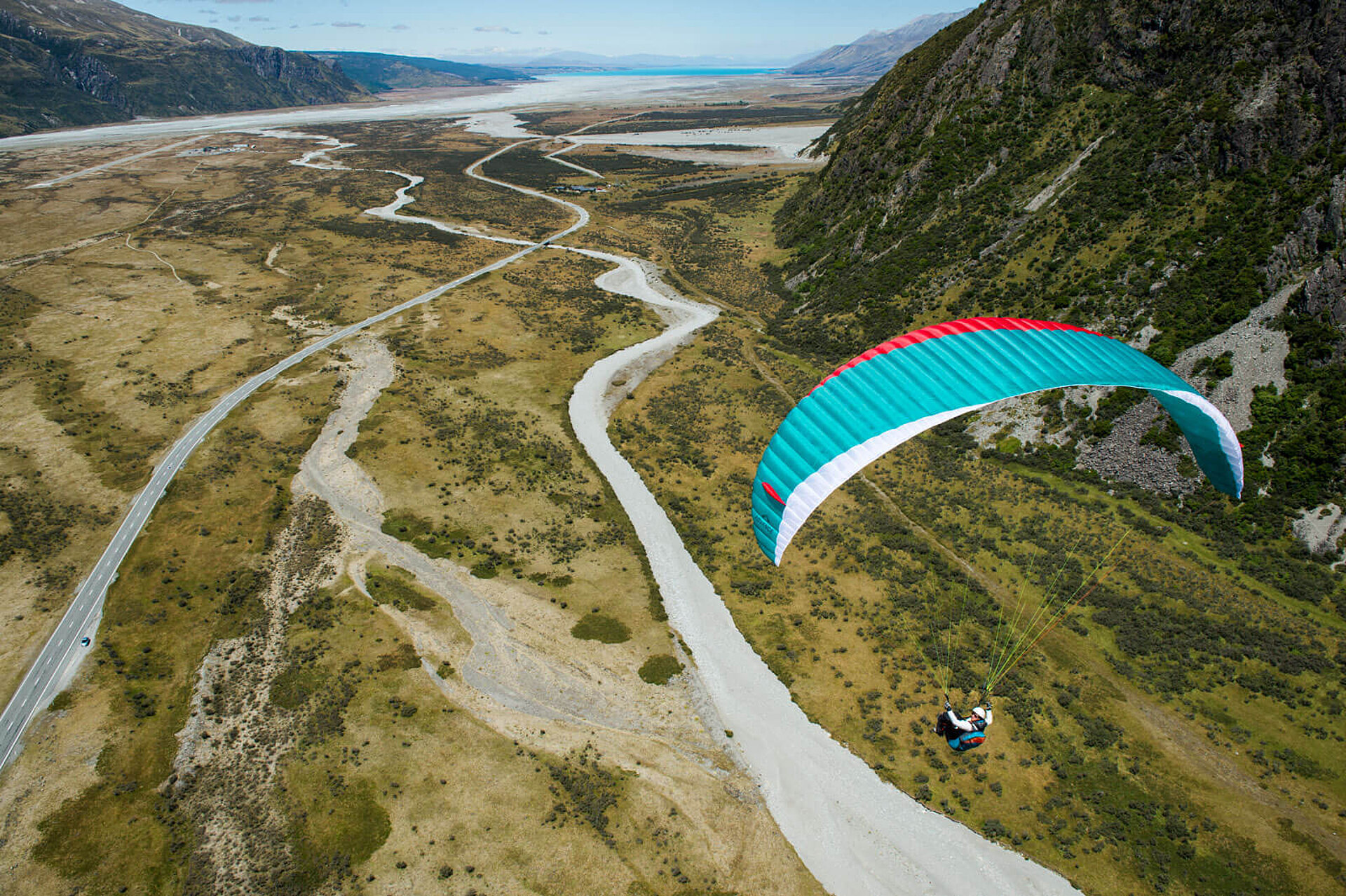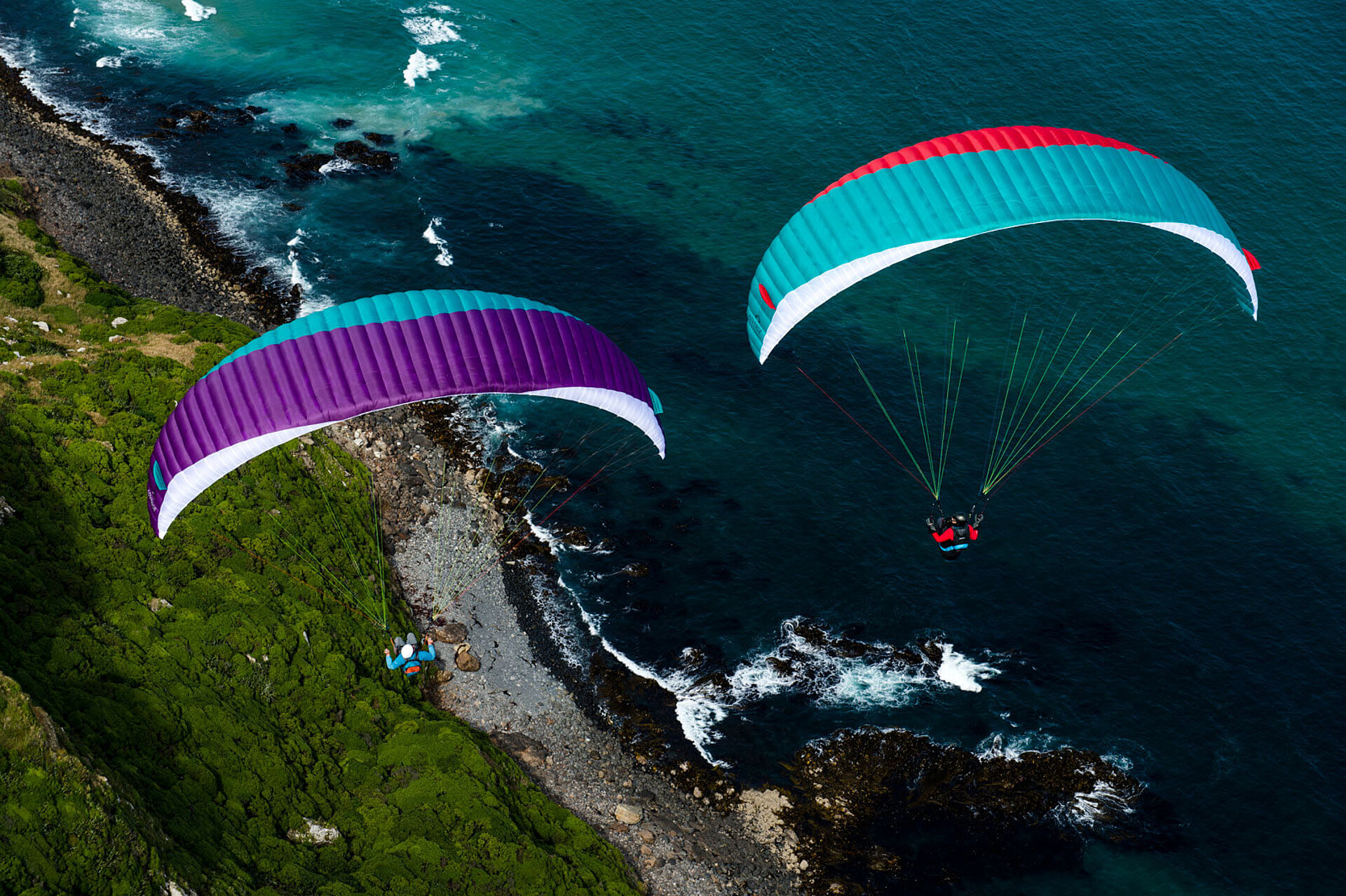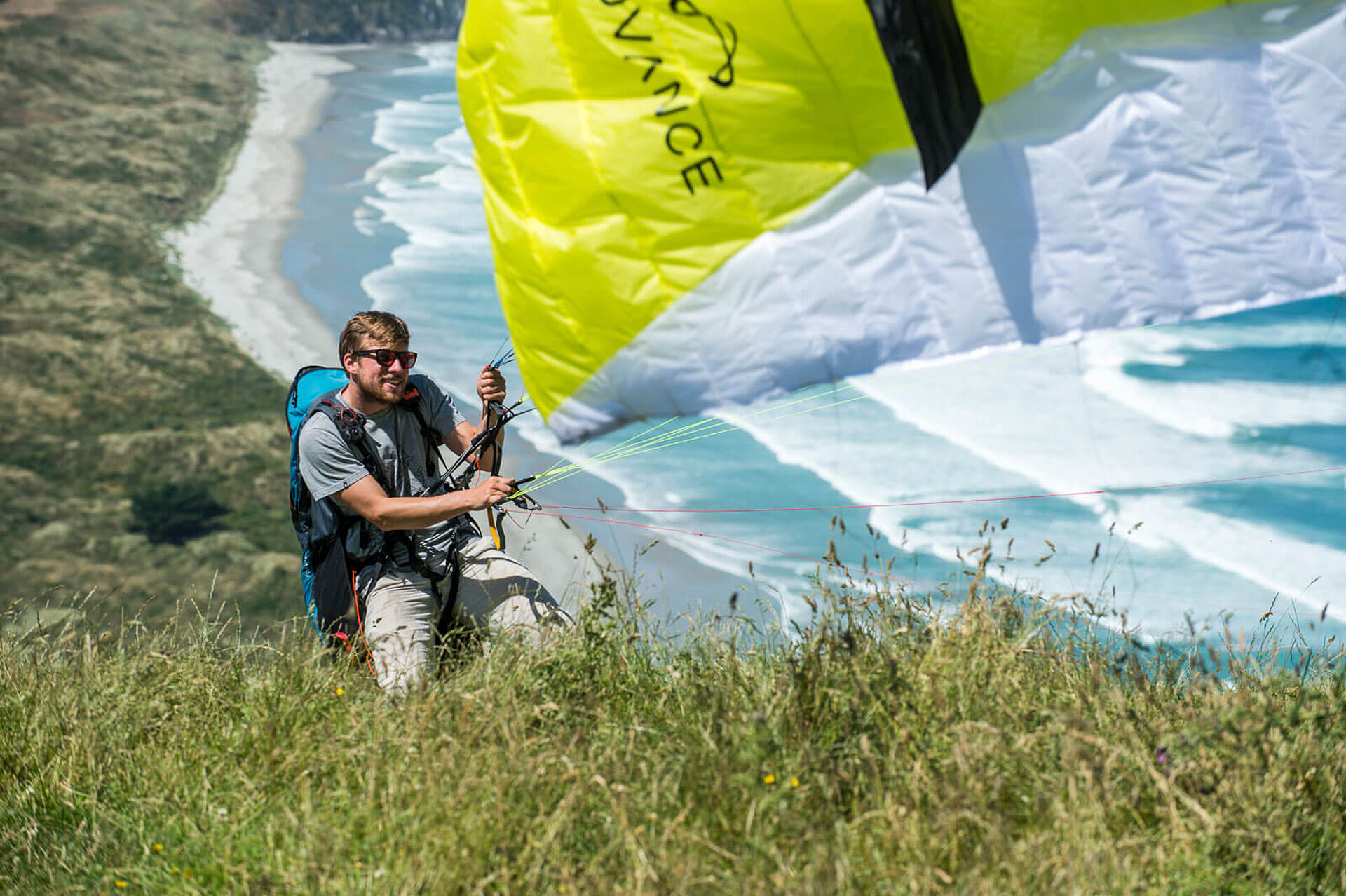When Captain James Cook landed in New Zealand in 1769 he couldn’t make himself heard for the noise of the birds. New Zealand was called Bird Island after that. Felix Wölk and Roman Berner made a road trip to the Pacific coasts of the southern hemisphere, to find something out about air on the stormy side.
Defying the stormy weather - Sandy Mount
Silently, wrapped up in his thoughts, Alexander Tups gazes over the dripping roofs of Dunedin. His eyes twinkle. The amateur meteorologist knows that there is no lasting depression over the South island. “Tomorrow Te Waewae Bay will work, you have to leave today”, he interprets from the downpour over the Otago peninsula. Alexander, himself a pilot, had granted us our first flight in this region two days ago, in the raw South New Zealand climate. A storm-ridden disturbance had come to a halt against the west side of the 3,800 metre high New Zealand Alps. On the east coast a giant lee rotor rotated, bringing north east wind – an enormous eddy of air had developed. Supported by the thermal sea breeze a sturdy upwind developed at Sandy Mount. For three fantastic hours we frolicked over a picturesque island landscape. Then, shortly afterwards, a Föhnstorm was uprooting trees.

Raw, Wild, Isolated – Te Waewae Bay
The Toyota Legacy’s windscreen wipers bravely shovelled water off our windscreen for three hours non-stop. Our goal was Te Waewae Bay on the extreme south coast of New Zealand. This might as well be the end of the world. Only a few farmers live here. They plant rows of trees as windbreaks to protect the sheep. The massive conifers grow in curved arcs under the influence of a permanent gale. Sometimes these give up the fight, shatter and fall like tin soldiers in the fight against the forces of nature. The Pacific has eaten its way greedily into this country, and a 15-kilometre cliff of compressed sand has developed, shaped like the break-up of a calving glacier. Te Waewae Bay is little known among paraglider pilots. Too windy, weather too unpredictable, the neighbouring town of Orepuki too forlorn. An almost forgotten coast in the southern hemisphere.
In the lee of a straw bale
In the hope of a flight we spent the night in the back of the Toyota. Our well-used vehicle rocked and heaved in the wind like a dinghy on the high seas. As day broke we stubbornly followed the cast-iron rules of flying: when things look bad prepare, if good take off. In the 50km/h wind we looked for a take-off spot, and were in luck. We waited in the lee of a straw bale. The Antarctic breeze is cold and strangely milky. It wraps the land like an icy silk cloth, soaking up colour and contrast.
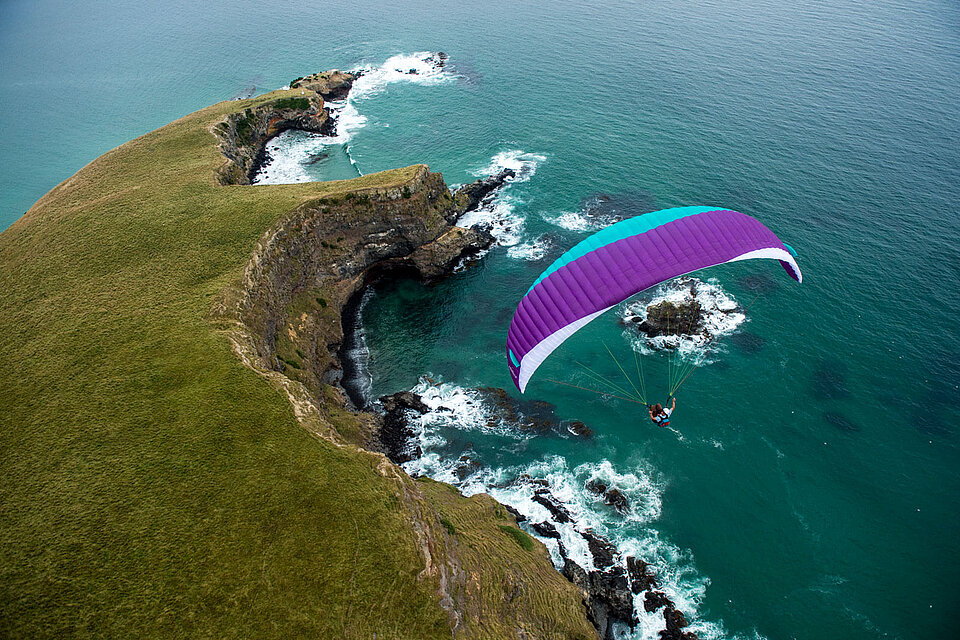
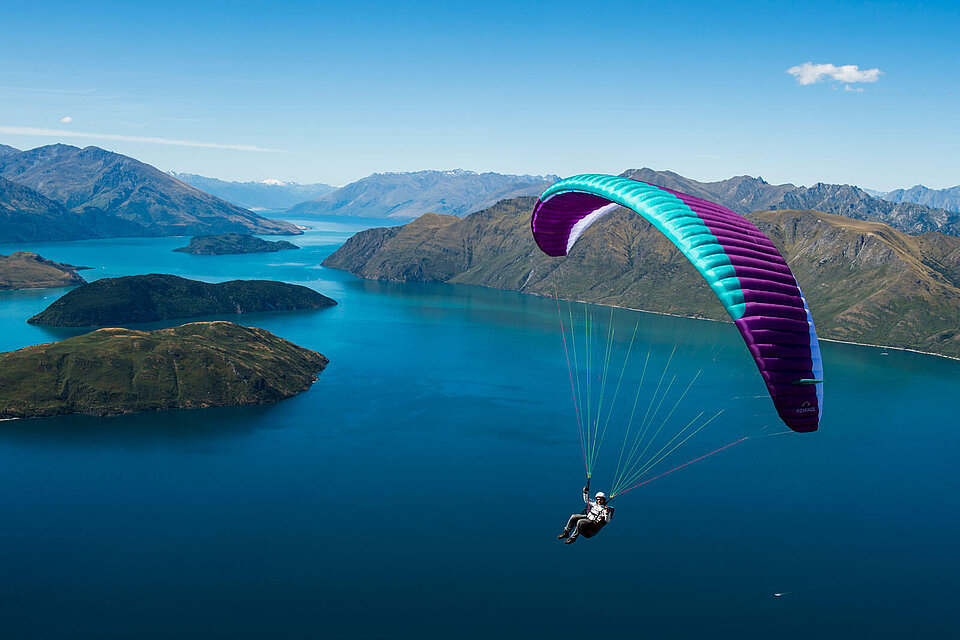
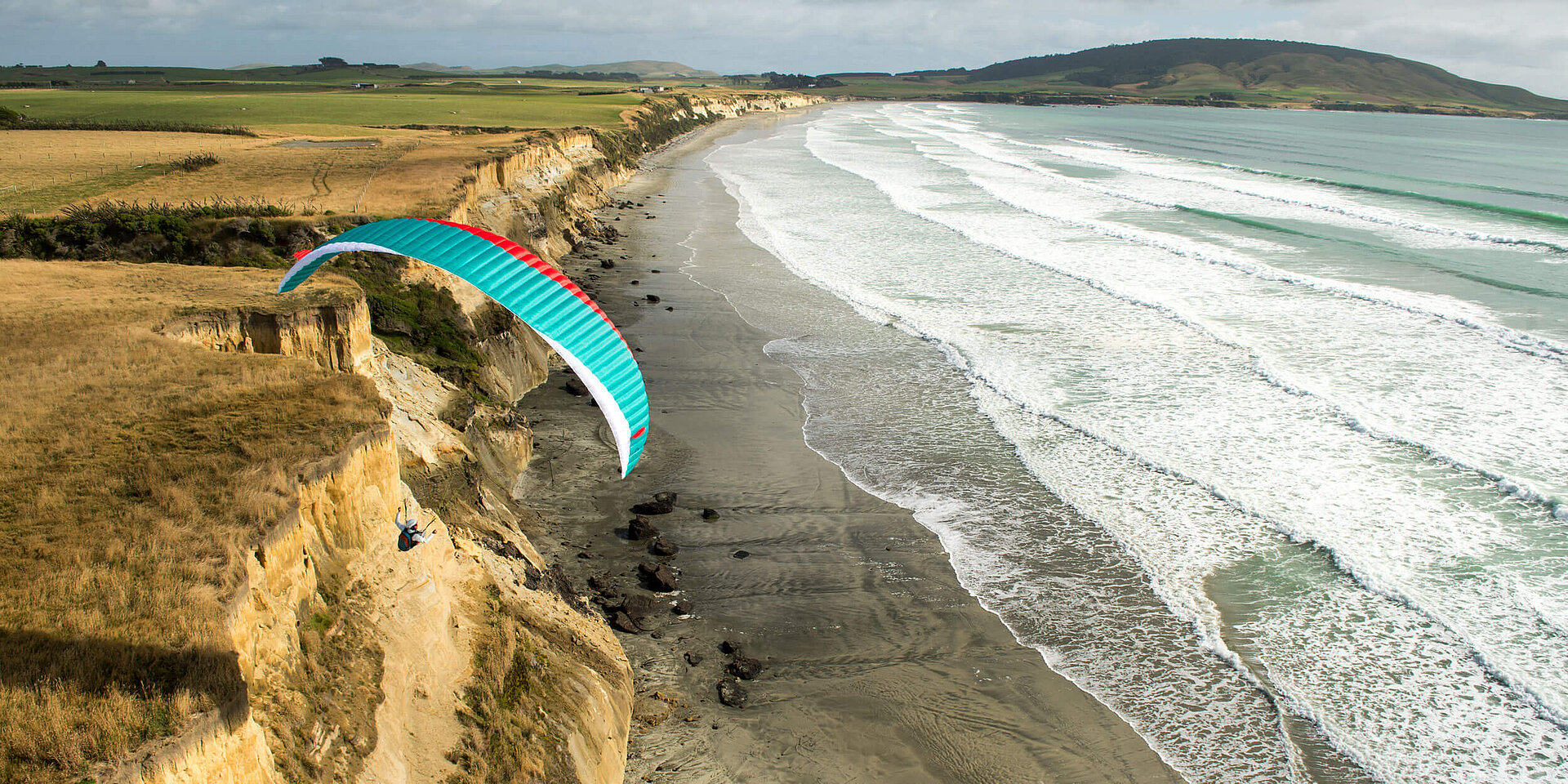
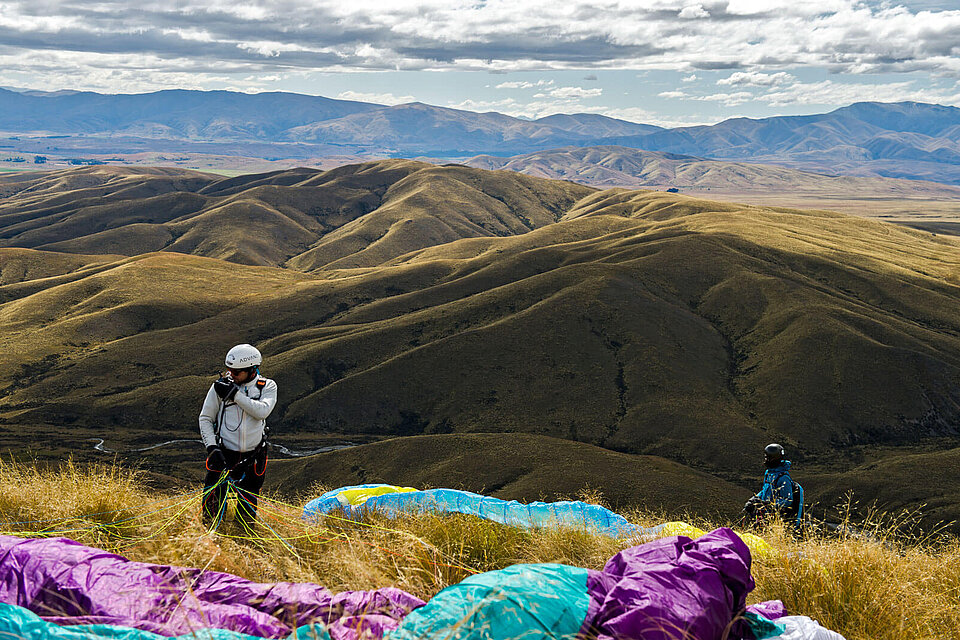
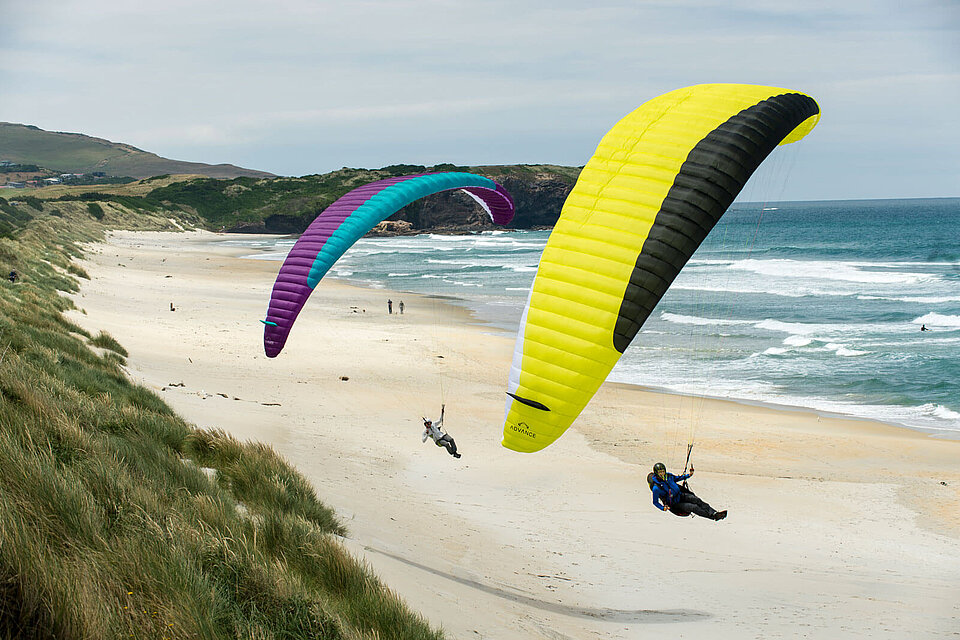
A New Zealand Jewel
At 2:30 that afternoon the white horse density on the sea reduced. The wind slowly turned south west. The window opened, revealing the pearl that could crumble to dust at any moment. We took off and found ourselves in a sub-Antarctic playground in the sky. The Te Waewae Bay coastline carried our wings for kilometres; beach thermal assistance, soft as butter, joined in. We rode the southerly breeze for hours at the 46 degree south parallel. We felt like birdmen: free, weightless and privileged. Do the birds feel the same sense of joy? James Cook, anyway, must have wondered the same in 1769.
The Equipment
The Team
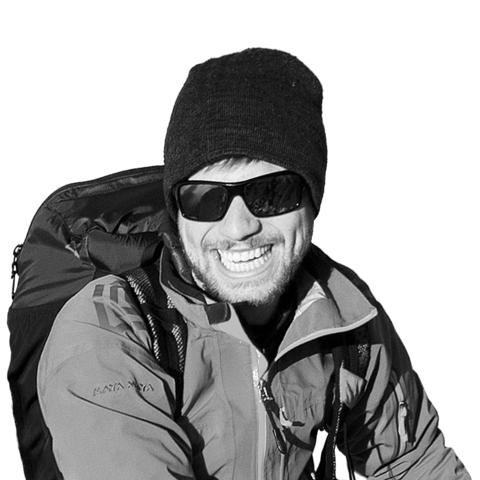
Roman Berner
Roman grew up in Switzerland and has paraglided since he was 18 – always in search of new adventures.
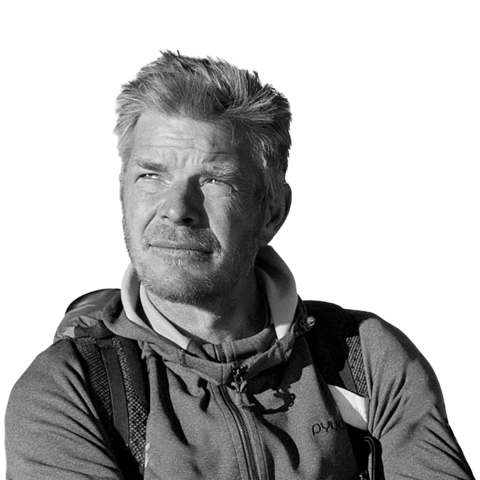
Felix Wölk
Felix is a paraglider and hangglider pilot, parachutist and mountain sportsman of the old school. For two decades he has enjoyed a worldwide reputation as a celebrated paragliding photographer.
